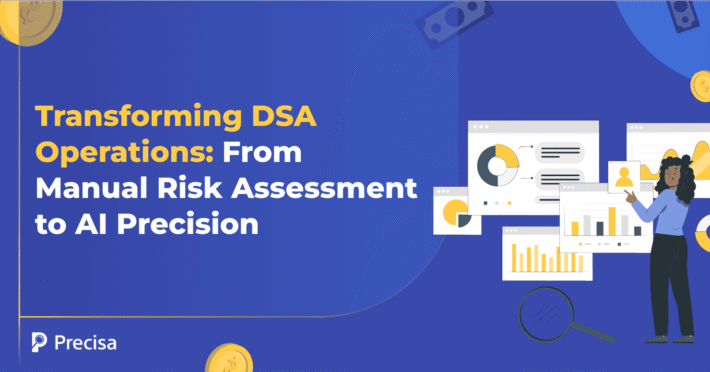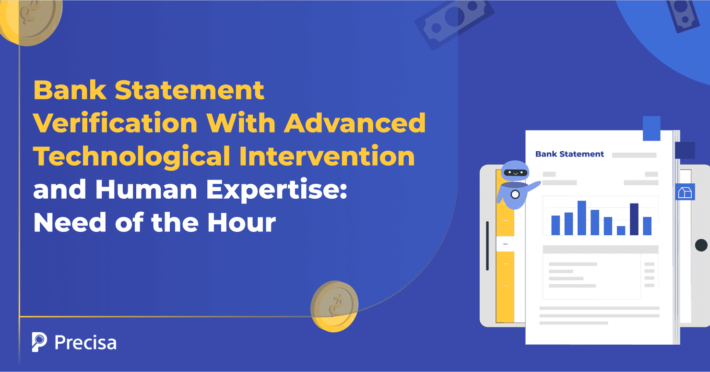3 Major Consequences of Money Laundering for Lenders in India

Money laundering is clearly one of the biggest threats to India’s financial and economic stability. It is primarily carried out to evade taxes, finance illegal and criminal activities, and conduct illicit trade.
The Enforcement Directorate (ED) revealed that it registered over 5,900 money laundering cases between 2014 and 2024. The total value of money laundering activities is estimated to be 5% of the country’s GDP.
As the financial industry moves toward a tech-driven ecosystem, money launderers are finding clever ways to disguise their activities. Loans have emerged as a favourable channel for infusing laundered money into the legitimate financial system.
This article explores the consequences for lenders, including penalties, fines, reputational damage, and more.
Money Laundering: The Role of Loans
Broadly speaking, money laundering is a financial crime that involves hiding the source of money earned illegally from financial regulators and law enforcement authorities. People often label this money as ‘black money’ or ‘dirty money’.
Now that we know what we mean by money laundering, let’s understand how financial criminals use loans to facilitate it.
This is how they do it.
Step-1: Individuals typically approach a bank to apply for a loan.
Step-2: In most cases, they name a shell company and often submit fake documents to conceal their identity.
Step-3: Once the loan application is approved, they use the illegal funds to repay it.
Repercussions of Money Laundering for Lenders
While lenders may not be directly involved in laundering, they may unknowingly help criminals hide funds and launder money. Failure to detect red flags while processing loan applications harms the country’s economy and has negative consequences for lenders.
Let’s examine them.
1. Fines and Penalties
Lenders, including banks, cannot turn a blind eye and ignore the early signs of money laundering while processing a loan application. The Prevention of Money Laundering Act (PMLA) includes several clauses that define a bank’s role in laundering cases.
For instance, the expressions of a banking company should be clearly defined, and all banks must maintain a record of all transactions for at least ten years.
Failure to do so could result in a fine of around ₹10,000-₹1,00,000, depending on the number of times it fails to comply.
The Financial Intelligence Unit (FIU) fined the Union Bank of India a sum of ₹54 lakh for violating the PMLA after it observed several irregularities in anti-money laundering (AML) compliance.
There are many such examples in which the Reserve Bank of India (RBI) or other authoritative bodies have levied heavy fines on banks for violating the defined AML standards.
In fact, the total value of penalties collected by the RBI for AML and know-your-customer (KYC) violations has surged by a whopping 88% in the last three years.
2. Revoked License
Regulators may revoke lenders’ licenses if they find them guilty of money laundering or aiding parties involved in the crime. The RBI has every right to cancel a bank’s or lending institution’s operational license if it fails to comply with its directions under Section 35A of the Banking Regulation Act, 1949.
Further, even if the RBI does not revoke the operational license, the financial regulator of a foreign nation may do so for violating that country’s AML laws and regulations.
For example, the Cayman Islands revoked Hinduja Bank’s license in 2021, citing involvement in money laundering and failure to show the audited accounts for two consecutive years.
Regulators can revoke the lender’s operational license if it fails to maintain and report suspicious transactions to the FIU.
3. Reputational Damage
Lenders, including banks, cannot be complacent and ignore their role in preventing money laundering. With 12 public-sector banks, 21 private-sector banks, and plenty of foreign banks to choose from, banks cannot afford any event that harms their reputation and shakes customer confidence.
Therefore, ensuring that a robust AML framework that complies with the PMLA is in place is important.
- Failure to do so can have catastrophic effects on lenders, leading to a reputational crisis, steep fines, and a significant loss of customer trust.
- A solid AML framework is no longer just a regulatory necessity but also a torchbearer of a lender’s commitment to preventing laundering.
- It also instills trust and offers a competitive edge in the increasingly cluttered financial market.
Parting Notes
As mentioned earlier, laundering continues to put a significant dent in India’s economy. Despite stringent laws and increasing government involvement, money-laundering-related cases continue to grow steadily, resulting in negative consequences for lenders, including irreparable reputational damage and hefty fines.
Advanced tools will play a key role in helping lenders track, detect, and report suspicious transactions and prevent money laundering.
Precisa’s Anti Money-Laundering Analysis tool empowers law enforcement authorities to stay on top of money trails and detect irregular and suspicious financial activity. It allows them to leverage the power of data analytics to make informed decisions to verify a company’s or an individual’s identity and transactional patterns.
Request a free demo today!




